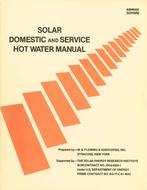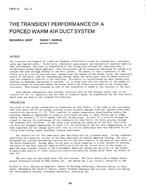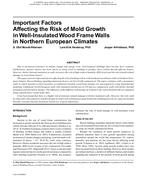Click here to purchase
There is an expectation in the design of buildings that installed ventilation systems are energy efficient, adequately sized, and, have appropriate controls. Equally, there is an expectation that occupants should be given sufficient information about these systems and how they are controlled. There is also an expectation that during operation mechanical ventilation heat recovery (MVHR) systems will maintain comfortable conditions while ensuring indoor spaces will be adequately ventilated. In this paper, we present a comparison of the design, installation, operation and performance of a retrofitted MVHR system in a university office space in Cork, Ireland. The in-use energy, comfort and indoor air quality (IAQ) performance of the system and the office space are also presented for a maritime climate during the heating season. Comparison with Irish Regulations revealed that the MVHR system was designed and sized adequately, however, no details in the operation of the system were given to the occupants during commissioning. Actual supply airflow rates were found to be greater than 3% in excess of the design on the high airflow setting. Consistently lower bulk in-use specific fan power (SFP) values were seen in operation when compared with design, with a reduction of over 30% in high flow setting for heat exchange and bypass modes. The heat recovery efficiency (HRE) in operation was found to exceed manufacturer’s values by over 3% in high flow operation. Average indoor CO2 levels were found to never exceed 900ppm, however, lower levels of occupancy than designed, lack of consideration in regulations for fabric leakage, and an unbalanced system led to poor comfort satisfaction amongst some occupants. Operating schedule refinement in heat exchange mode resulted in satisfactory comfort levels (80%-90% of occupants satisfied with thermal environment) when the system was operated for two two-hour periods without compromising on IAQ performance and reducing the weekly operational running hours by over 48% compared to the schedule used at handover. The study highlighted the need for robust commissioning and controls, comprehensive training and engagement with occupants and post occupancy evaluation of operational conditions to ensure optimal energy and thermal comfort performance of these systems.
Citation: 2021 Virtual Conference Papers
Product Details
- Published:
- 2021
- Number of Pages:
- 10
- Units of Measure:
- Dual
- File Size:
- 1 file , 1.5 MB
- Product Code(s):
- D-VC-21-C010


